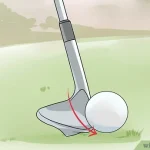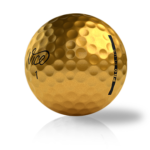Golf putting grips are crucial for improving accuracy and control. The right grip can significantly enhance your putting game.
Choosing the correct golf putting grip can make a world of difference in your performance on the greens. There are various types of grips, such as the traditional, cross-handed, and claw grips, each offering unique benefits. The traditional grip is the most common, providing a balanced feel.
Cross-handed grips can help stabilize the wrists, reducing unwanted movements. Claw grips can minimize hand tension, promoting a smoother stroke. Experimenting with different grips can help you find the one that best suits your style and improves your consistency. Proper grip technique can be a game-changer, boosting your confidence and lowering your scores.
Introduction To Golf Putting Grips
Golf putting grips are vital for improving your game. A good grip can make a huge difference. It affects your control and accuracy. This section explores why a good grip is essential. We will also discuss common mistakes to avoid.
Importance Of A Good Grip
A good golf putting grip offers better control. It helps in achieving a consistent stroke. Here are some key points:
- Control: A firm grip ensures better control of the putter.
- Accuracy: It enhances accuracy in your shots.
- Consistency: A proper grip leads to a more consistent stroke.
Gripping the putter correctly can lower your scores. It also boosts your confidence on the green.
Common Mistakes
Many golfers make grip mistakes. Here are some common errors:
- Too Tight: Gripping the putter too tightly can lead to tension.
- Poor Alignment: Incorrect hand alignment affects the stroke.
- Inconsistent Grip: Changing your grip frequently causes inconsistency.
Avoiding these mistakes can improve your putting. Pay attention to your grip for better performance.

Credit: www.golfdigest.com
Types Of Putting Grips
Mastering the right putting grip can transform your golf game. Different grips offer unique advantages. Let’s explore the most popular ones below.
Conventional Grip
The Conventional Grip is the most common. It’s also called the Reverse Overlap Grip. Your left hand rests on top, while the right hand grips below. This grip offers great control and stability.
Cross-handed Grip
The Cross-Handed Grip flips the hands. The left hand is below the right hand. This grip reduces wrist movement. Many golfers find it easier to keep the putter steady.
Claw Grip
The Claw Grip is unique. The right hand is turned sideways. This grip minimizes wrist action. It helps in achieving a smooth and controlled stroke.
Armlock Grip
The Armlock Grip is gaining popularity. The putter shaft rests against the forearm. This grip offers exceptional stability and control. It limits wrist movement completely.
| Grip Type | Hand Position | Benefits |
|---|---|---|
| Conventional Grip | Left hand above, right hand below | Great control and stability |
| Cross-Handed Grip | Left hand below, right hand above | Reduces wrist movement |
| Claw Grip | Right hand sideways | Minimizes wrist action |
| Armlock Grip | Putter shaft against forearm | Exceptional stability and control |
Choosing The Right Grip
Choosing the right golf putting grip can significantly improve your game. The grip affects your control, accuracy, and comfort during play. This section will help you understand key factors to consider. These factors include hand size and strength, personal comfort, and putting style.
Hand Size And Strength
Your hand size and strength are crucial in selecting the right grip. A proper grip ensures better control and prevents strain. Here’s a simple guide:
- Small Hands: Opt for thinner grips. They allow better control.
- Large Hands: Choose thicker grips. They offer more support.
- Weak Grip Strength: Softer grips can reduce stress on your hands.
- Strong Grip Strength: Firmer grips provide better stability.
Personal Comfort
Personal comfort is key to a consistent putting game. A grip that feels good will boost your confidence. Consider these points:
- Material: Leather grips offer a classic feel. Rubber grips provide more cushion.
- Texture: Smooth grips reduce friction. Textured grips enhance control.
- Size: Ensure the grip fits comfortably in your hand.
Putting Style
Your putting style also influences your choice of grip. Different styles benefit from different grips. Here’s a quick overview:
| Putting Style | Recommended Grip |
|---|---|
| Arc Stroke | Round grips for flexibility. |
| Straight Stroke | Flat grips for stability. |
| Claw Grip | Thicker grips for better balance. |
Understanding your putting style helps in choosing a grip that complements your technique. This results in a more consistent performance.
Grip Pressure And Its Impact
Understanding the right grip pressure in golf is crucial. It affects your control and accuracy. The pressure you apply can make or break your putt. Both too tight and too loose grips have their downsides.
Too Tight Vs. Too Loose
A grip that’s too tight can lead to tension. This tension can affect your swing and reduce accuracy. You might feel your hands and arms becoming stiff. This stiffness makes it hard to control the putter.
On the other hand, a grip that’s too loose may cause the putter to wobble. This results in a lack of stability. The putter might twist during your stroke. This twisting can send the ball off course.
Finding The Sweet Spot
Finding the right balance is key. You need a grip that’s neither too tight nor too loose. Here’s a simple test:
- Hold the putter with your normal grip.
- Try to lift the putter off the ground slightly.
- If it feels firm but not tense, you’re in the sweet spot.
Practice helps you find this balance. Test different pressures during practice sessions. Note how each pressure affects your putt.
Remember, the goal is a relaxed but secure grip. This ensures better control and a smoother stroke. Your putts will be more accurate and consistent.
| Grip Pressure | Impact |
|---|---|
| Too Tight | Causes tension, reduces control |
| Too Loose | Lacks stability, can twist putter |
| Just Right | Offers control and smooth stroke |
Adjusting Your Grip For Different Greens
Golf putting grips can change your game. Adjusting your grip for different greens is crucial. It helps you adapt to various playing surfaces. Let’s explore how to adjust your grip for three types of greens.
Fast Greens
Fast greens are smooth and quick. The ball rolls faster. You need a lighter grip. A tight grip makes the ball roll too far. Hold the putter softly. This helps you control the speed better. A light touch helps the ball stop where you want.
Slow Greens
Slow greens have longer grass. The ball moves slowly. Use a firmer grip here. A firm grip gives you more power. You need to push the ball harder. Your hands should be steady. This helps the ball reach the hole.
Undulating Greens
Undulating greens have hills and slopes. The ball changes direction often. Use a balanced grip. Not too tight, not too loose. Balance helps you guide the ball. Your grip should adapt as you putt. Focus on the direction and power. Adjust your stance to improve control.
| Green Type | Grip Type | Key Points |
|---|---|---|
| Fast Greens | Lighter Grip | Control speed, soft hold |
| Slow Greens | Firmer Grip | More power, steady hands |
| Undulating Greens | Balanced Grip | Guide ball, adjust stance |
Training Techniques
Mastering your golf putting grip can significantly improve your game. Using the right training techniques is essential. These techniques help you develop consistency and accuracy. Below, we explore key training methods to perfect your grip.
Grip Drills
Grip drills are exercises that focus on your hand placement and pressure. Regular practice of these drills helps in developing muscle memory. Here are a few effective grip drills:
- Finger Placement Drill: Hold the putter with only your fingers. Practice short putts to feel the grip.
- Light Pressure Drill: Hold the putter with minimal pressure. This helps in understanding the right grip tension.
- Alignment Drill: Use alignment sticks to check if your grip is square to the target.
Practice Routines
Consistent practice routines help in reinforcing your grip technique. Create a structured practice plan to see improvements. Here are some routines to follow:
- Daily Practice: Spend 15 minutes daily focusing on your grip.
- Focused Sessions: Dedicate specific days to work solely on grip drills.
- Varied Distances: Practice putts from different distances to test your grip consistency.
Feedback Tools
Using feedback tools can provide insights into your grip performance. These tools help you make necessary adjustments. Here are some useful feedback tools:
| Tool | Purpose |
|---|---|
| Grip Trainer | Ensures correct hand placement on the putter |
| Pressure Sensor | Monitors grip pressure during putts |
| Video Analysis | Provides visual feedback on grip technique |
Integrating these tools into your practice sessions can help you perfect your putting grip.
Pro Tips For A Consistent Grip
A consistent golf putting grip is vital for accuracy and control. Mastering your grip can transform your game. Below are pro tips to help maintain a steady grip and adapt to different course conditions.
Grip Maintenance
Maintaining your golf grip ensures you play your best. A worn grip can cause slips and poor shots. Here are some tips to keep your grip in top shape:
- Regular Cleaning: Use mild soap and water to clean your grip.
- Inspect for Wear: Check for cracks or smooth spots on the grip.
- Replace When Needed: Replace grips that are worn or too smooth.
A clean and well-maintained grip offers better control and reduces tension.
Adapting To Course Conditions
Golf courses vary widely in conditions. Your grip must adapt to weather and terrain. Here are some tips:
- Wet Conditions: Use a towel to keep your grip dry.
- Hot Weather: Use a glove to prevent sweat from affecting your grip.
- Cold Weather: Opt for a thicker grip for better warmth and control.
Adapting your grip to the course conditions can significantly improve your performance.
Common Myths About Putting Grips
Golf putting grips are crucial for a perfect putt. But many myths surround them. Let’s debunk some common myths about putting grips.
One-size-fits-all
Many believe a single grip suits all golfers. This is not true. Every golfer has unique hand sizes and preferences. A grip that works for one person may not work for another.
- Hand size affects grip comfort.
- Personal preference plays a big role in grip choice.
- Trying different grips can improve performance.
Grip Changes Are Difficult
Another myth is that changing grips is hard. In reality, changing grips is quite simple. You can do it at home or at a golf shop.
- Remove the old grip with a cutter.
- Apply double-sided tape to the club.
- Slide the new grip onto the club.
Changing grips can be done in minutes. Don’t fear making adjustments.

Credit: superstrokeusa.com
Frequently Asked Questions
What Grip Do You Use For Putting?
I use the reverse overlap grip for putting. This grip stabilizes the hands and promotes a smooth stroke.
Which Putting Grip Is Used Most By Professionals?
The most used putting grip by professionals is the reverse overlap grip. It provides control and stability, enhancing accuracy.
What Is Tiger Woods Putting Grip?
Tiger Woods uses a conventional putting grip. He positions his left hand high on the grip and overlaps his right pinky finger.
How Do Most Pros Grip Their Putter?
Most pros use either the traditional, claw, or cross-handed grip for their putter. Each offers control and stability.
Conclusion
Mastering the right golf putting grip can elevate your game significantly. Experiment with different styles to find your perfect fit. Remember, consistency is key. Practice regularly to develop muscle memory and improve your precision. With the right grip, you’ll enjoy more confident and accurate putts on the green.
Happy golfing!





